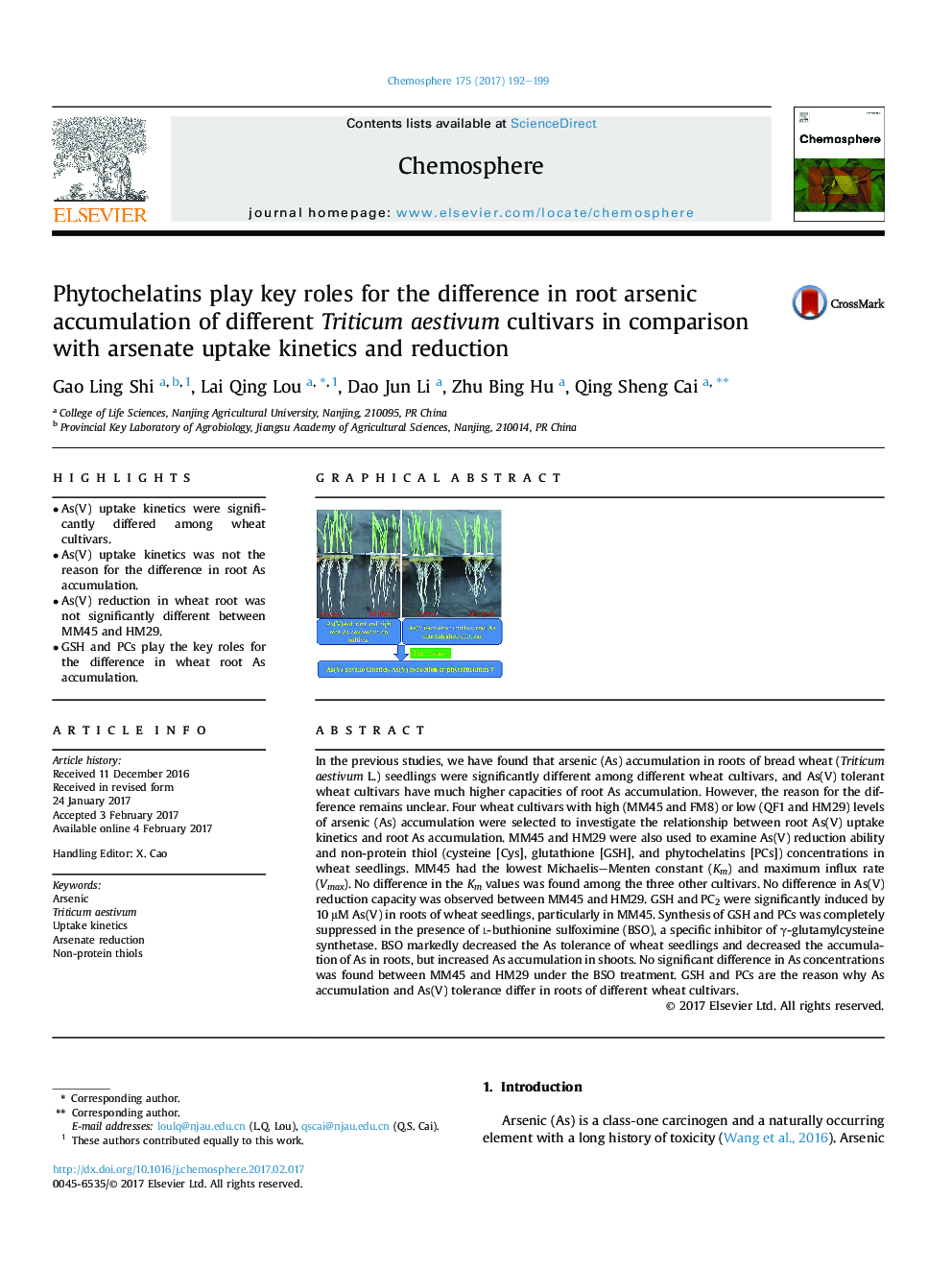| کد مقاله | کد نشریه | سال انتشار | مقاله انگلیسی | نسخه تمام متن |
|---|---|---|---|---|
| 5746473 | 1618796 | 2017 | 8 صفحه PDF | دانلود رایگان |

- As(V) uptake kinetics were significantly differed among wheat cultivars.
- As(V) uptake kinetics was not the reason for the difference in root As accumulation.
- As(V) reduction in wheat root was not significantly different between MM45 and HM29.
- GSH and PCs play the key roles for the difference in wheat root As accumulation.
In the previous studies, we have found that arsenic (As) accumulation in roots of bread wheat (Triticum aestivum L.) seedlings were significantly different among different wheat cultivars, and As(V) tolerant wheat cultivars have much higher capacities of root As accumulation. However, the reason for the difference remains unclear. Four wheat cultivars with high (MM45 and FM8) or low (QF1 and HM29) levels of arsenic (As) accumulation were selected to investigate the relationship between root As(V) uptake kinetics and root As accumulation. MM45 and HM29 were also used to examine As(V) reduction ability and non-protein thiol (cysteine [Cys], glutathione [GSH], and phytochelatins [PCs]) concentrations in wheat seedlings. MM45 had the lowest Michaelis-Menten constant (Km) and maximum influx rate (Vmax). No difference in the Km values was found among the three other cultivars. No difference in As(V) reduction capacity was observed between MM45 and HM29. GSH and PC2 were significantly induced by 10 μM As(V) in roots of wheat seedlings, particularly in MM45. Synthesis of GSH and PCs was completely suppressed in the presence of l-buthionine sulfoximine (BSO), a specific inhibitor of γ-glutamylcysteine synthetase. BSO markedly decreased the As tolerance of wheat seedlings and decreased the accumulation of As in roots, but increased As accumulation in shoots. No significant difference in As concentrations was found between MM45 and HM29 under the BSO treatment. GSH and PCs are the reason why As accumulation and As(V) tolerance differ in roots of different wheat cultivars.
451
Journal: Chemosphere - Volume 175, May 2017, Pages 192-199